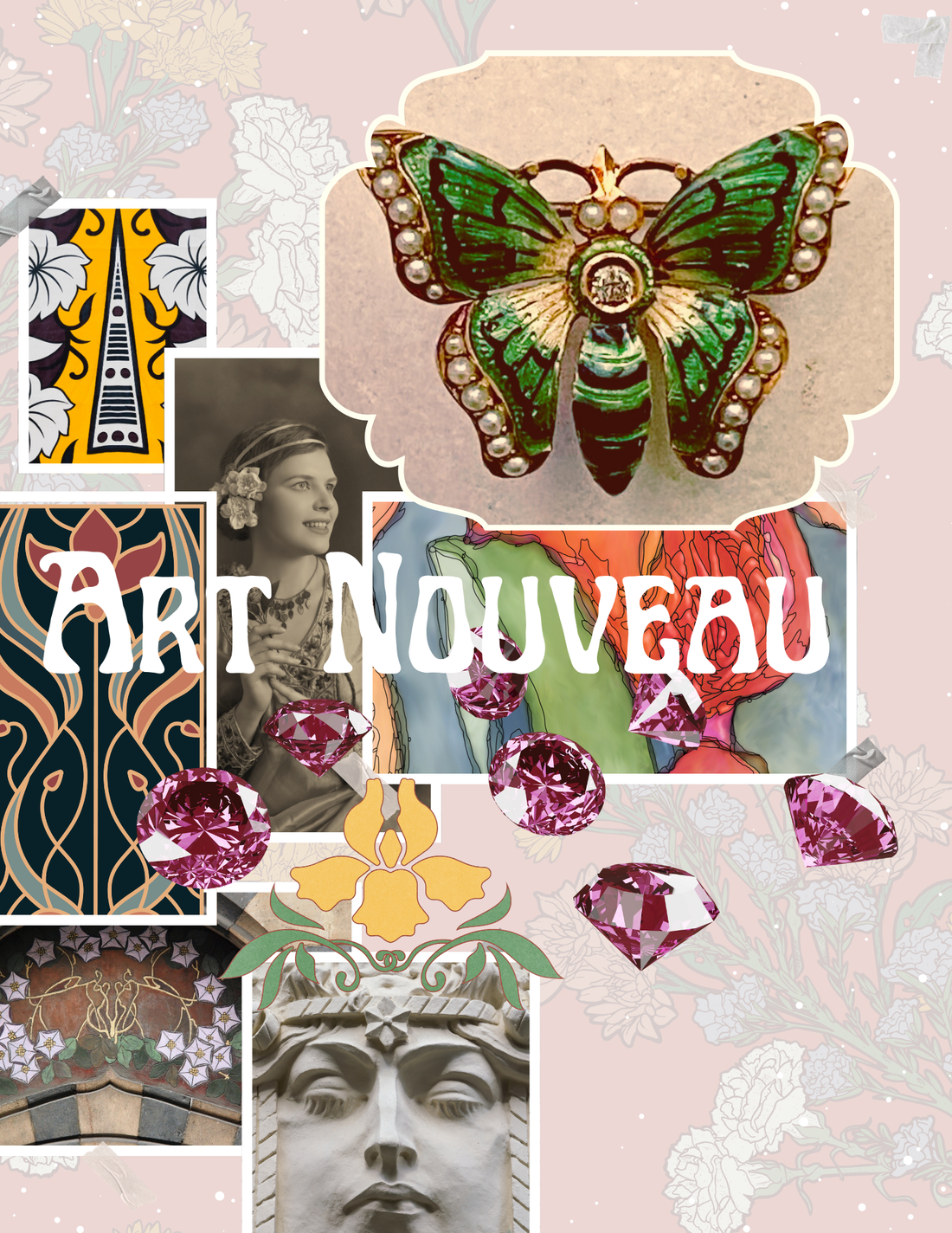
History: Art Nouveau and the Timeless Elegance of Jewelry Design
Share
Art Nouveau and the Timeless Elegance of Jewelry Design
Art Nouveau, the decorative art movement that flourished between 1890 and 1910, is a cornerstone of artistic innovation. While it left its mark on architecture, furniture, and graphic design, nowhere did its influence shine brighter than in the world of jewelry. With its flowing lines, organic motifs, and revolutionary craftsmanship, Art Nouveau transformed jewelry into wearable art, making each piece a testament to the beauty of nature and the human imagination.
The Philosophy Behind the Style
Art Nouveau was not merely a design trend; it was a philosophy. Artists and craftsmen sought to break free from the rigid historical styles that had dominated art and design. They turned to nature for inspiration, embracing its asymmetry and imperfection. Jewelry designers rejected mass production in favor of intricate, handcrafted pieces that celebrated individuality—a radical departure in the age of industrialization.
Nature as Muse
Art Nouveau jewelry is instantly recognizable for its organic motifs. Designers drew heavily from nature, incorporating flowers, vines, insects, birds, and aquatic life into their designs. The natural world was not depicted literally but through a dreamlike lens, with flowing lines and ethereal forms. Dragonflies, butterflies, and peacocks were especially popular, their delicate beauty perfectly capturing the movement's romantic spirit.
One surprising element of Art Nouveau jewelry is its fascination with the unconventional. For example, insects like beetles and spiders—creatures not traditionally associated with beauty—became frequent motifs. This willingness to embrace the unexpected was a hallmark of the era, reflecting a desire to find elegance in the overlooked and extraordinary.
The Materials That Defined an Era
Art Nouveau designers were experimental not just in form but also in materials. While precious metals like gold and platinum remained staples, they often paired these with non-traditional materials like enamel, horn, and ivory. Plique-à-jour enamel, a translucent technique that mimics stained glass, became a signature element of the style. The use of pearls, moonstones, opals, and other iridescent stones added a luminous quality that further emphasized the ethereal beauty of the designs.
Gemstones were often chosen for their artistic qualities rather than their monetary value. For example, moonstones and opals, with their mysterious glows, were preferred over diamonds. This emphasis on artistry over ostentation was a defining characteristic of the movement.
Iconic Art Nouveau Jewelers
No discussion of Art Nouveau jewelry is complete without mentioning the master craftsmen who defined the era. René Lalique, a French jeweler and glassmaker, was perhaps the most famous. His creations combined exquisite craftsmanship with daring design, often incorporating enamel, horn, and semi-precious stones. Lalique's pieces are now considered some of the most collectible jewelry in the world.
Georges Fouquet, another prominent name, was known for his collaborations with artist Alphonse Mucha. Their partnership brought together Fouquet's technical expertise and Mucha's iconic illustrations, creating jewelry that was both stunning and innovative.
The Legacy of Art Nouveau Jewelry
Though Art Nouveau’s popularity waned after 1910, its influence on jewelry design remains profound. Many of the techniques and motifs pioneered during this era continue to inspire modern designers. The movement’s emphasis on craftsmanship and artistic expression laid the groundwork for subsequent styles, including Art Deco and modernist jewelry.
Collectors and enthusiasts still prize Art Nouveau jewelry for its uniqueness and beauty. Each piece tells a story—not just of the era in which it was created but also of the artisan’s vision and the natural world that inspired it.
Why It Matters Today
In a world increasingly dominated by mass production, Art Nouveau jewelry serves as a reminder of the power of individuality and creativity. It challenges us to see beauty in the unexpected, to celebrate the imperfect, and to embrace craftsmanship as an art form. Whether worn as a personal statement or displayed as a collector’s treasure, these pieces continue to captivate and inspire.
Art Nouveau jewelry is not just an artifact of the past; it is a timeless celebration of nature, artistry, and imagination. As you admire its delicate lines and intricate details, you are not just looking at a piece of jewelry—you are holding a piece of history, a window into an era that dared to dream differently.